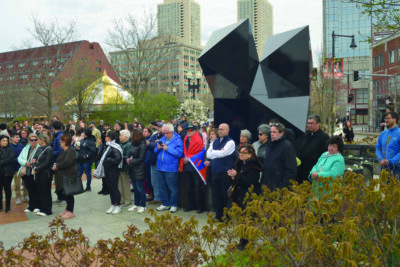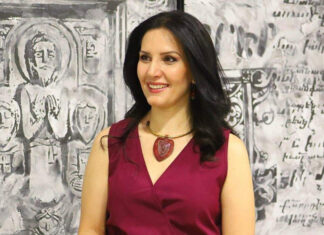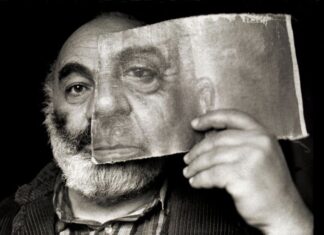By Aram Arkun
Mirror Spectator Staff
NEW YORK — There are only a handful of translators in Armenia of Armenian-American literature into Armenian. Aram Arsenyan is one of the most prolific of them. He has translated a wide range of works, primarily novels and short stories. He also has translated a number of non- Armenian classic authors from English into Armenian, and has published a number of his own literary creations. Yet he does all this as an avocation, while earning his living at other jobs.
Born in 1952 in the village of Talin, Armenia, Arsenyan as a child studied in a Yerevan school focusing on English during the Soviet period. This meant that he had classes in the English language in elementary school, and beginning in sixth grade took some other classes (e.g. geography, history, chemistry and English literature) in English. However, he pointed out, “it was not too efficient, because we did not have good English-speaking teachers then.” He already had some literary interests in school. In sixth grade, he became a member of the editorial staff of children of Shavigh [path or trail], which was a part of the newspaper Pioner kanch [Call of the Pioneer]. He wrote short articles and reviews and even then did translations, including literary ones.
Arsenyan’s father was a writer and journalist (member of the Journalists Union of Armenia), while his mother was a teacher of history. Despite his own literary interests and his father’s example, Arsenyan initially wanted to enter Yerevan Polytechnical Institute’s Department of Cybernetics after high school. This was a new profession in Armenia, and Arsenyan prepared for the entrance examination by intensively studying mathematics and physics. However, he quarreled with his math teacher, and suddenly changed his mind. He applied to Yerevan State University, and entered the Department of Romano-Germanic Languages to study English literature in 1969. Arsenyan attributes this return to literature in part as “genetic.”
At the university, students were very interested in science fiction, so they decided to create Solaris, a wall newspaper (meaning only one copy was prepared, and it was posted on a wall for all to read). Arsenyan translated short stories for it, as well as for the weekly Yerevani hamalsaran [University of Yerevan]. He primarily published works of Anglo-American writers in the latter publication. Arsenyan also as a student had translations published in the literary magazine Garun [Spring] and other publications like Avangard, Pioner kanch and Yerekoyan Yerevan [Evening Yerevan].
After graduating the university, like many others he had to decide how to make his living. He chose to enter the Ministry of Education, where he had already begun to work while a student as secretary of the Komsomol organization of the Yerevan State University Faculty of Philology in 1972. He stayed to work there for some thirty years. For the first ten years, he served as an inspector, examining the organization of the educational process, as well as teaching methodology. Then he was promoted to the head of the department coordinating the activities of educational institutions that were not in schools, such as Pioneer Palaces (where children could receive all types of education, including aesthetic, physical, ecological, and technical), sports schools, centers for technical education, centers for ecological education and centers for young tourists. These institutions existed in Yerevan, and all big cities and regions.









